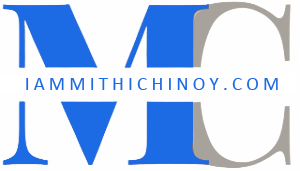
Image by Freepik
Remember that feeling of staring at a never-ending to-do list, wondering where to even begin as a freelancer? We’ve all been there. But here’s the good news: there’s a secret weapon called micro-productivity that can help you make small but significant progress.
It’s all about taking a giant task and chopping it into bite-sized chunks. So, let’s dive into this micro-productivity magic and see how it can transform your freelance journey!
Now, why does it matter? It does, because when you break complex projects down into manageable tasks, you’re opening up an entirely new efficiency level that can transform your freelance game.
So, let’s uncover the secrets of micro-productivity and make those freelancing dreams a reality, one bite-sized task at a time.
The Psychology Behind Micro-Productivity
Our minds feel satisfied whenever we accomplish a small task. That’s because when we are faced with a daunting task, we feel stressed, overwhelmed and threatened.
So, when you approach the problem by breaking it down into manageable tasks, the brain responds positively. Each small completed task releases a dopamine shot, setting off a feel-good reaction.
This not only creates a sense of accomplishment but motivates us to tackle the upcoming task on our list.
This certainly reduces overwhelm and makes your list look less daunting. It also helps reduce the burden of handling a complex project.
Once you feel confident of handling an easy task, your focus and clarity increase. In turn, you get the twin benefits of increased creativity and better problem-solving.
When you’re no longer overwhelmed, your motivation level increases and you can inject purpose into your task and eventually see progress.
Starting Out with Micro-Productivity
So, how do you get started with micro-productivity? Well, think of it as the key that brings on a smooth and more efficient system.
To begin with, assess and break down a large project into smaller, doable tasks. Look at your to-do list with an eagle eye and spot the difficulty level of each task.
By examining these tiny tasks, you will get the required clarity on the steps you need to take to complete the task.
This will also prepare you to have a more structured approach to your work.
The next item on your agenda is to create a to-do list which is so detailed that it reads like a blueprint. It should guide you from one micro-task to another, offering precision at every stage.
Apart from to-do lists, it works well to use task management tools such as reminders, deadlines and categorization that help you become highly productive.
Equip yourself with these trusty companions as you set off on your micro-productivity journey. They will help you navigate the intricacies of your freelance landscape and chart a course to success, one small task at a time.
Applications of Micro-Productivity for Freelancers
How can you, a freelancer, use the concept of micro-productivity in your working life? Here are some examples of commonly performed freelance tasks that suit this approach well.
Probably you’re trying to write a compelling e-mail pitch. Or you’re designing a website. Or researching a project.
Each of these huge challenges can be can be broken down into smaller tasks. If you’re refining your pitch, you could do it incrementally.
If you’re researching a project, you could break down the topic into sub-topics and conduct research on each sub-topic.
Similarly, if you’re designing a website, you could tackle its elements sequentially.
From the above three examples, it’s obvious that micro-productivity allows you to break down a large and complex project into several achievable tasks.
This helps you steer your workload efficiently and confidently.
Techniques to Implement Micro-Productivity
There are several ways of implementing micro-productivity. However, the most effective of them all are:
- Time-Blocking:
When you block time for a specific project, you set aside focused time periods to achieve them. During each such period, you can concentrate hard without being distracted and, thereby, achieve efficiency.
Not only does this method increase your efficiency but it also ensures that you give the required attention to each task. Ultimately, this leads to a more organized and productive work day for you.
- Task-Batching:
Here, small and similar tiny tasks are grouped together. Once batched, you can handle them during specific time blocks. This prevents you from constantly switching context and allows you to work peacefully in an organized manner.
For instance, you could respond to mails, conduct research or edit content one after another. This will make your work more streamlined and efficient and you will be able to get more done quickly.
-
Pomodoro Technique:
The Pomodoro Technique is yet another popular approach to micro-productivity. This method revolves around an individual working on a task for about 25 minutes, followed by a short interval.
Each such time period makes up one Pomodoro. Ideally, after completing four Pomodoros, you can take a longer break.
By using this technique, the brain gets used to focusing on work in short bursts. It also prevents the possibility of burnout by taking structured breaks.
This technique is simple but effective in increasing productivity in your daily work life.
Micro-Productivity Tools and Apps
If you’re looking to optimize your workflow and increase your work efficiency, you definitely need micro-productivity tools and apps.
These apps support micro-productivity principles and help you break down your tasks into small bits. You can then control your workflow easily.
Some micro-productivity tools that can help you in your freelance career include time-tracking tools, task management apps, and productivity timers.
-
Time-Tracking Tools:
Some popular time-tracking tools include Clockify, Toggl Track, Timely and Harvest. They allow freelancers to monitor the time they spend on each micro-task.
This brings in a sense of accountability and offers understanding into productivity patterns.
When work is broken down into timed intervals, you can rate your efficiency and make informed changes to their workflow.
-
Task Management Apps:
Task management apps are essential tools that help you stay productive and organized. You may be juggling personal to-do lists or collaborating with senior freelancers on complex projects.
That’s when task management apps such as To-doist, Asana, ClickUp, or Trello provide you with sufficient digital space to set up, organize, give precedence to and track your micro-tasks.
With the help of their features such as reminders, due dates and other collaborative features, you can streamline your micro-productivity process.
-
Productivity Timers:
Perhaps the best-known of all productivity timers is the Pomodoro Technique, though others like Focus@Will and Be Focused are also competent.
All these apps offer structured a period of focused work, followed by a short break. By integrating these timers into your daily routine, you create a rhythmic and viable approach to micro-productivity.
To get the most out of these tools, it’s best that you integrate them seamlessly into your daily workflow.
This means you set clear goals, create routines, and try out different apps until you find the right combination that suits your work style.
Ultimately, you will find that all micro-productivity tools and apps are your trusted friends whom you can rely on to have a more enriching, focused, and organized freelancing experience.
Overcoming Challenges in Micro-Productivity
The challenges of micro-productivity include addressing commonly experienced hurdles. For instance, it could mean underestimating the amount of time you need to complete a small task.
Or burnout caused by task-switching every so often. Lastly, staying disciplined even during interruptions could be a huge challenge.
Overcoming these challenges includes implementing strategies to avoid distractions and stay focused.
So, how do you tackle these challenges?
- If time-setting is an issue, set a realistic time estimate for every small task.
- To counter unexpected delays at work, it works if you incorporate some buffer time.
- Fix a certain period to assess and tweak your micro-productivity methods so that you always remain on top of every situation.
- Implement productivity apps that work to keep you focused, silence notifications, and block distracting websites.
- Lay down clear expectations with family and colleagues about your work schedules.
- Schedule time for communication and adhere to it.
- Set aside dedicated periods for focused work and don’t deviate from them.
Micro-Productivity for Creative Freelancers
If you’re a creative freelancer, you can integrate micro-productivity into your workflow to manage complex projects. For example, if you’re a graphic designer working on a complex visual project, you could break down your entire project into micro-tasks instead of viewing the project as a whole.
For example, you could focus on color schemes, then work on layouts and, lastly, typography. Not only does this give your project the required structure, but you work efficiently and smoothly until you finish.
Implementing this approach can help you maintain the required flexibility to push creative boundaries. You also benefit from maintaining focus and efficiency when acting on small tasks.
Your creative mind can also steer through the nuances of your work meaningfully, ensuring that each step you take contributes to a larger artistic vision.
All in all, micro-productivity works as a catalyst to unlock your full creative potential within a set framework of an organized and strategic workflow for anyone working in a creative field.
Conclusion
Micro-productivity isn’t just another term coined for dealing with tiny tasks. Rather, for freelancers, it’s a complete game-changer. By reducing huge tasks into bite-sized, doable tasks, you’re no longer overwhelmed by the hugeness of the overall task.
Also, you can stay focused until the end of the project.
Don’t be afraid to experiment! Find micro-hacks that suit your work style and projects, and customize them as you go along.

